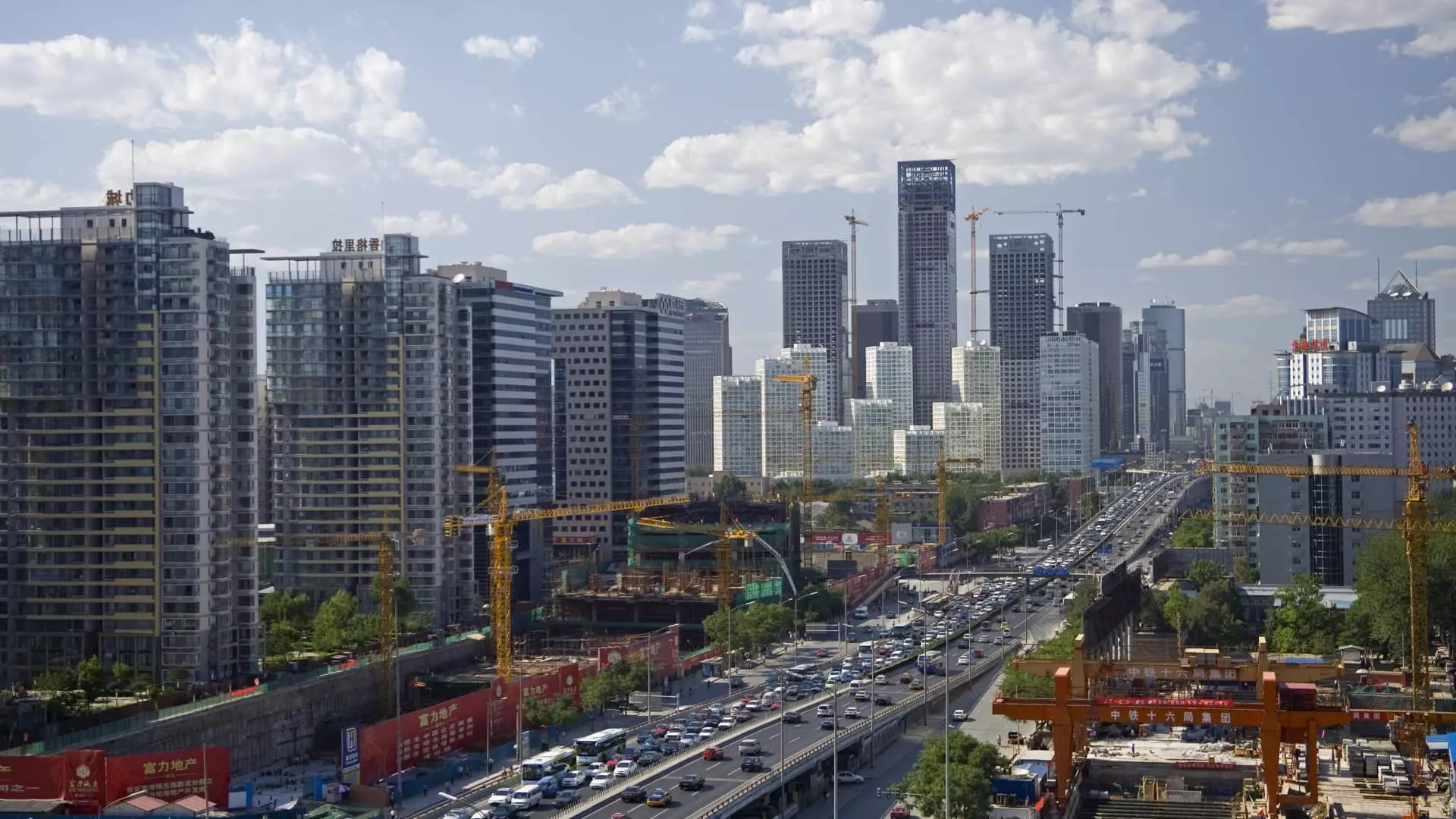China’s economy has demonstrated a vigorous initial quarter, with a reported 5.4% expansion that outpaced expectations and stirred cautious optimism among analysts. However, beneath this surface of growth lies a troubling undercurrent that could greatly destabilize the nation’s economic trajectory. The proclamations of strong retail sales and industrial output must be viewed through a critical lens, especially when considering the diminishing prospects due to escalating trade tensions with the United States. While positive annual growth figures may paint a rosy picture, the truth is that these statistics mask a more serious reality: the threat of an economic downturn looms large, and China’s prosperity is precariously balanced on a tightrope of external pressures.
The statistics presented by the National Statistics Bureau highlight this dichotomy. Retail sales in March surged by 5.9% year on year, and industrial output showed an impressive 7.7% growth. Yet, anyone familiar with the prevailing circumstances would recognize that such indicators might be fleeting, influenced by temporary policies rather than reflecting genuine resilience. Additionally, a sobering revelation lies within fixed asset investment, where real estate has seen a stark decline of 9.9% from the previous year. This statistic is not a mere footnote; it’s a blaring siren announcing that the robust facade may soon crack under pressure.
Domestic Demand and External Pressures
Despite the government’s assertions about a robust recovery and an economy “off to a good and steady start,” the reality is gloomy. The statistics bureau’s acknowledgment of insufficient domestic demand serves as an admission of vulnerability. The complexities of the external environment, exacerbated by a growing trade war with the United States, are already straining China’s economic fabric. The high-stakes tug-of-war has placed tariffs at a staggering 145% on Chinese goods—a punitive measure likely to stifle exports substantially and impede growth even further.
The potential ramifications of these tariffs extend far beyond immediate economic calculations. As U.S. officials escalate their confrontational approach towards Chinese imports, the very foundation of what has sustained Chinese growth—export-driven manufacturing and investment—faces unprecedented risks. Analysts are already echoing warnings that this protracted conflict will bleed into macroeconomic indicators, dampening forecasts and potentially tipping the economy into an unwanted recession.
Illusions of Progress in Innovation
Interestingly, amidst the turmoil, there’s a narrative that champions China as an emerging leader in innovation—pioneered by companies like DeepSeek, which claims to rival established American tech firms. However, the notion of innovation should not offer a comforting blanket over the stark realities revealed by economic indicators. This burgeoning innovation sector is still in its infancy and may falter if the broader economic landscape deteriorates.
The government’s attempt to frame domestic innovation as a guiding light has its limitations when we consider that the foundations of such technological advances are often built on stable economic footing. A shrinking consumer base due to external factors will undoubtedly stunt investment in innovation, thereby stifling long-term growth. The contrasts between the bright narrative of technological advancement and the sobering facts on the ground suggest that the leadership is engaged in a delicate balancing act, fraught with dangerous pitfalls.
Proactive Policies or Delayed Responses?
China’s leadership is clearly recognizing the urgency of the situation, reiterating the necessity of implementing more proactive and effective macro policies. However, it remains uncertain whether these policy adjustments will come swiftly and decisively enough to avert imminent threats. The ambitious growth target of “around 5%” seems increasingly unrealistic when viewed against the backdrop of escalating tariffs and subpar domestic consumption. Economists have already begun to adjust their expectations downward, sensing the impending impact of external shocks.
If the government’s response is flawed or delayed, we could witness a dire scenario where declines in domestic consumption and exports converge, resulting in a significant economic contraction. Promised monetary easing, such as anticipated cuts to reserve requirements and interest rates, may prove insufficient if the fundamentals of the economy do not change.
As the second quarter approaches, the window for a decisive response is narrowing. If authorities do not rapidly devise and implement more robust support mechanisms, the economic narrative of growth may transition to one of crisis. The threat of deeper stagnation is not hypothetical but an alarming prospect that must be met with urgent, intelligent, and innovative policy solutions.
In an era where economic interdependence defines global dynamics, China’s economic fate cannot be comprehensively understood through domestic statistics alone. Navigating this precarious landscape demands more than surface-level optimism; it necessitates a fearless confrontation with the intricate challenges that lie ahead.



Leave a Reply